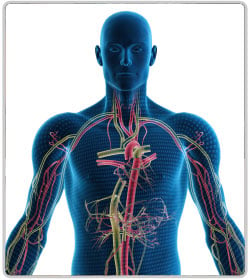A new link between two fungal recognition receptors on the surface of macrophages has been uncovered by Whitehead Institute researchers.

Protein unmasks pathogenic fungi to activate immune response
The first step in defending against a hostile attack is identifying the enemy. It''s how a healthy immune system mounts a response to invading pathogens. In the case of certain fungi, however, the attacking cells may be so cleverly disguised that they''re able to slip past our cellular guardians undetected and wreak havoc through infection. Such infections are a rising source of morbidity and mortality in healthy individuals, as well as in patients suffering from chronic diseases, such as cancer or AIDS.
In this week''s issue of the journal Proceedings of the National Academies of Sciences (PNAS), Whitehead Institute scientists describe a mechanism by which immune cells can distinguish between pathogenic and non-pathogenic fungi and modulate the immune response accordingly.
The work builds on earlier research that identified how certain immune cells, called macrophages, determine whether a foreign cell is a fungus. The protein dectin-1, which resides in the macrophage cell membrane, recognizes beta-glucan, a sugar molecule that supports the cell walls of fungi. Once dectin-1 detects beta-glucan, indicating the presence of a fungal threat, it can trigger many responses in its macrophage, including engulfment of the fungal cell; production of reactive oxygen species (ROS) that are toxic to the fungal cell; and secretion of inflammatory cytokines and chemokines that recruit other immune cells to the fight.
To observe dectin-1''s activity in living cells, researchers in the labs of Whitehead Founding Member Gerald Fink and Member Hidde Ploegh collaborated to tag the protein while integrated into the cell membranes of macrophages. Maximilian Popp, a former graduate student in the Ploegh lab, had refined this tagging method, which does not interfere with normal cell functions. Earlier tagging methods had relied on attaching a bulky green fluorescent protein (GFP) to the protein of interest. Although GFP tagging is a valuable research method, it can induce unwanted changes in protein and cellular behavior.
Advertisement
Using Popp''s method, called sortagging, Alexandre Esteban, a postdoctoral researcher in the Fink lab and first author of the PNAS paper, determined that dectin-1 associates with the protein galectin-3 in macrophages. Although known to recognize pathogenic fungi, galectin-3''s specific role in the immune response to fungi had yet to be identified.
Advertisement
Galectin-3 recognizes and then binds to specific sugar molecules from this outer layer that are only present in the pathogen Candida albicans. Such recognition flags the fungal cells as pathogens and modulates dectin-1''s immune responses.
"Until now, we didn''t know that dectin-1 requires a partner to modulate its response, depending on if the fungi are pathogenic or non-pathogenic," says Esteban. "With this work, we determined the way that immune cells discriminate between pathogenic and non-pathogenic fungi."
Esteban notes that research studying galectin-3 and its role in the immune system should enhance our understanding of invasive fungal infections and may one day lead to discovery of novel targets for antifungal drugs.
This research was supported by the National Institutes of Health (NIH), the National Institute of Allergy and Infectious Diseases (NIAID), the Fulbright/Spanish Ministry
of Education and Science Visiting Scholar Program, and the Margaret and Herman Sokol Fellowship in Biomedical Research.
Source-Newswise














